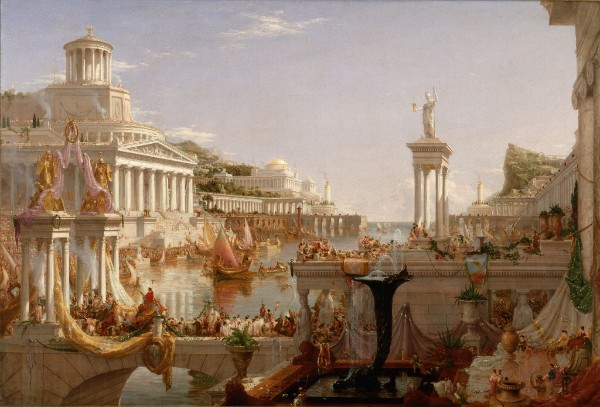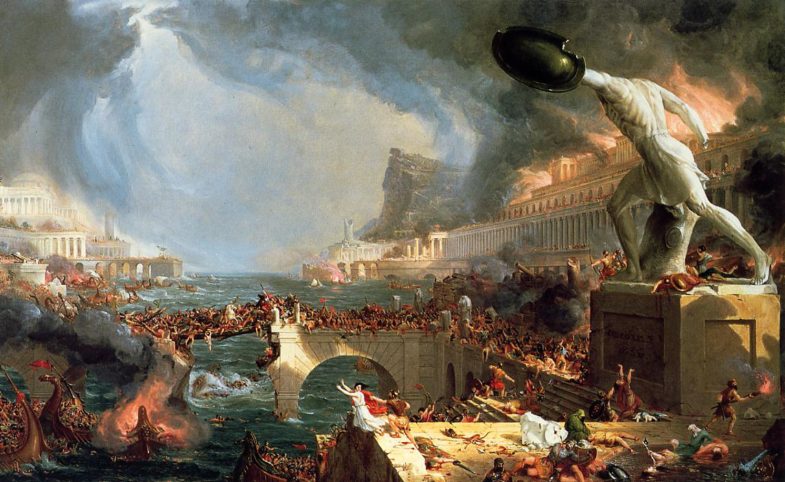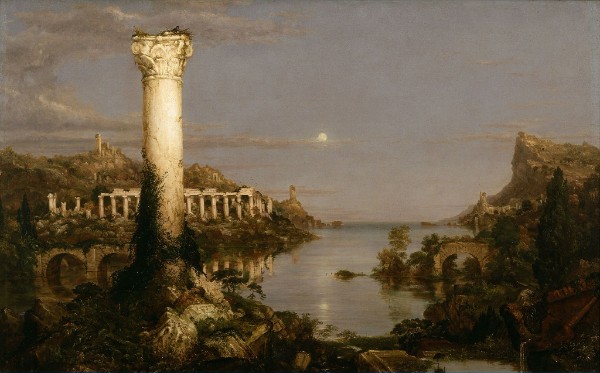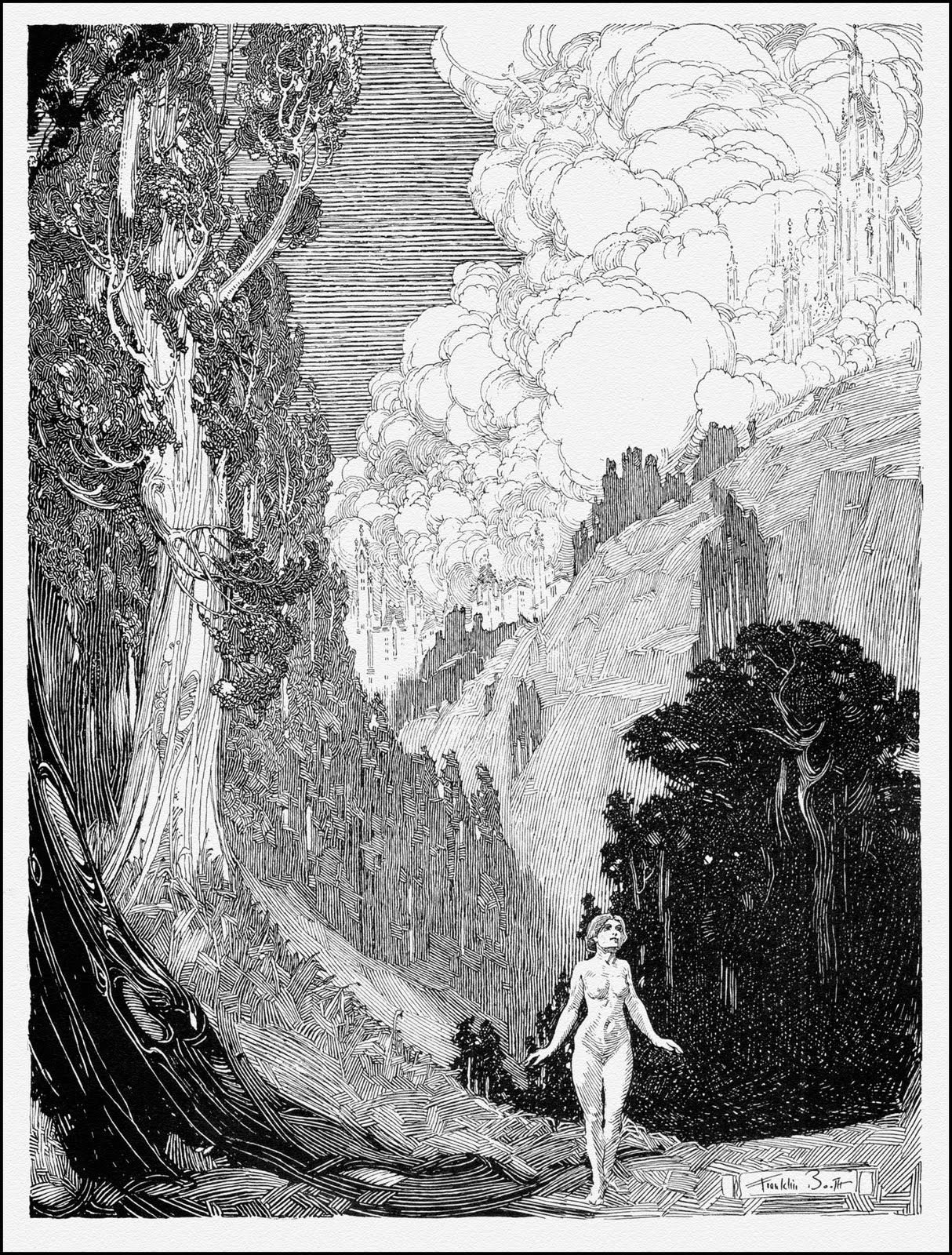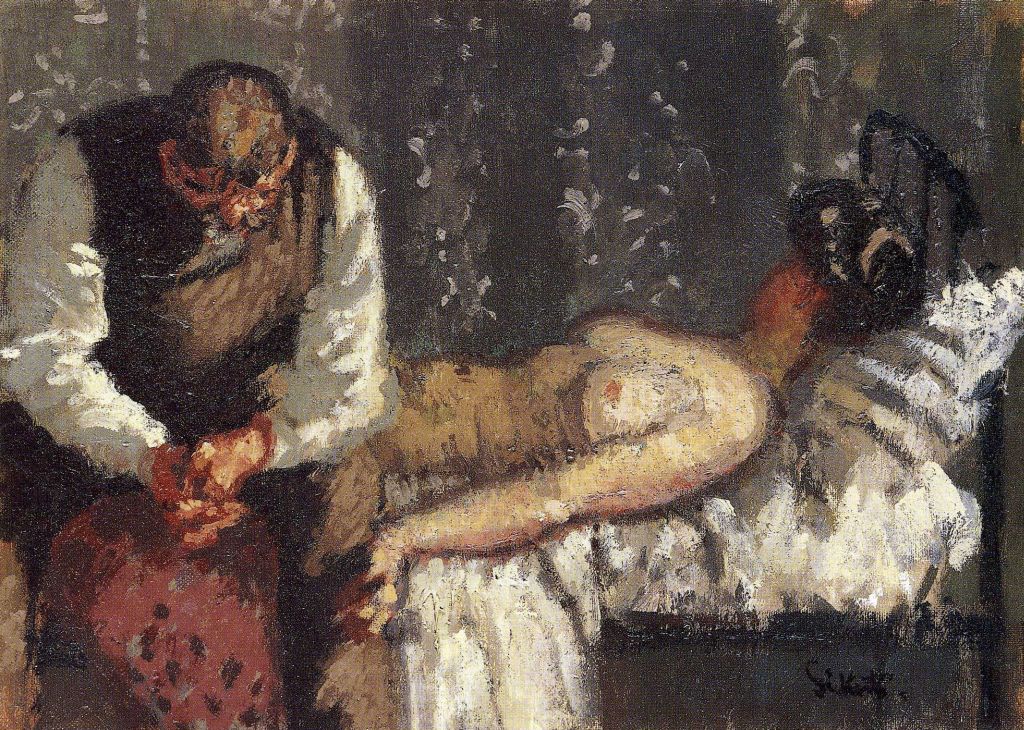Every morning, I wake up and look across the room at a Thomas Cole painting. Well, let’s face it, I’m not enormously rich so it is actually an old print. The print is of one of Cole’s five “Course of Empire” paintings, in this case “Consummation.”
It’s been a personal favorite for a very long time, but I have a secret to discuss here today. When I look at it, what I sometimes see is destruction instead.
More specifically, what often blinks into my head is the next painting in Cole’s series, “Destruction.” “Consummation” might have a home on my wall, but “Destruction” is on the shortlist of my favorite paintings. I’m sure a lot of that is that Cole framed “Destruction” in nearly the same view as its predecessor, with only a wider shift out into and above the river compared to “Consummation.”
The slight shift adds great consistency to the series, and more than that it adds real drama to the setting. Cole moved us from the riches of the empire, at the top of its civilization, to its annihilation. Barbarians are sacking the city, burning everything in their way and killing anything that moves. Cole replaced the calm story of “Consummation” and its marble colonnades and blue skies with a fury of fire and storms.
Cole replaced the setting not just with the scene, but with the contrast he painted each with. “Consummation” is a softer image, and it gives the viewer a calming impression of safety, wealth, and happiness. There are mirrored waters, fountains and tapestries all around, and certainly a sense of overindulgence. Cole painted “Consummation” with exactly that idea in mind, that the empire is complete and at its zenith here.
What goes up, as the old saying goes, must come down, and this empire’s fall from the zenith is catastrophic. It is not simply that the fight is going badly for the empire, it is seemingly the entire atmosphere around them as well. The fires rage, merging into a storm of chaos in the sky, reminiscent of John Martin’s work. Cole painted all manner of chaos on the ground to match it, from huge burning buildings down to solitary fighters and victims.
For me, as much as I love all the chaos, it is the massive broken statue that speaks to me the most. As an artist, it is a striking image, a sculpture of such majesty that seeing it destroyed tells the whole story even without all of the chaos around it. If it was just the statue, resting alone in a deserted scene, the sense of annihilation would still feel enormous.
In the end, it is the enormity between the two pieces that makes “Destruction” so effective. We’ve seen the light at its brightest, at its greatest height, and we’ve fallen into the depths of darkness so profoundly that nothing could ever save us.
Seeing Cole’s final painting in the series, “Desolation,” proves the idea sound. No matter how high you get, no matter how powerful you think you are, there are always barbarians at the gates.
References
See the MASSIVE version of The Course of Empire: Destruction
See previous editions and subscribe to new articles here.
The Course of Empire: Destruction
Thomas Cole
1836, Oil on canvas
39 1/4 x 63 1/2 in. (100cm x 161cm)
New York Historical Society
New York, NY
http://www.nyhistory.org/exhibit/course-empire-destruction-0
